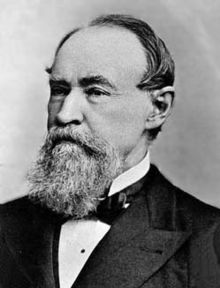- Exploring the Cost of Veneers in South America
- Unveiling the Art of Securing Funding: Yanni Hufnagel’s Pearls of Wisdom for Confident Capital Procurement
- Embark on a Culinary Adventure: Walnut Creek’s Five Must-Try Dining Destinations
- Unlocking the Smile Makeover: A Look at Veneer Costs in Colombia
- Elevating Memory Capacity: Core Approaches to Cognitive Flourishing
William Ferrel and the Ferrel Cell
March 17, 2016
By Phin Upham
Born in 1817, William Ferrel would develop many important meteorological theories that would help to explain mid-latitude atmospheric circulation. The Ferrel Cell is named after him, and it explains how the polar cell is created. While the theory is currently still up for debate, as some scientists believe such a cell does not exist, it provides some important context for both the Hadley and Polar cells.
Ferrel spent a great deal of time working on the basics behind the Coriolis Effect, trying to explain atmospheric circulation at mid-latitudes. He attempted, in great detail, to discuss the properties of warm air and how it rose and rotated.
His theories branched off of work already done by George Hadley, but Hadley had only done most of the job. He’d overlooked the specifics, and missed an important mechanism that Ferrel managed to observe. Ferrel essentially correlated the motion of the Earth with the motion of the atmosphere, showing how centrifugal force is created.
Hadley was able to show that the atmosphere cannot maintain equilibrium with its motion either increasing or decreasing. He also successfully showed that these movements are dependent on the Earth’s surface.
Unfortunately, that’s only a portion of the story and it’s not entirely accurate. Ferrel was able to show that when anguler momentum is taken into account, that air moves relative to the Earth itself. Once Ferrel had made this discovery, a fuller picture of our weather systems began to emerge. This important observation still plays a major role in meteorology.
About the Author: Phin Upham is an investor at a family office/ hedgefund, where he focuses on special situation illiquid investing. Before this position, Phin Upham was working at Morgan Stanley in the Media and Telecom group. You may contact Phin on his Phin Upham website or LinkedIn page.






